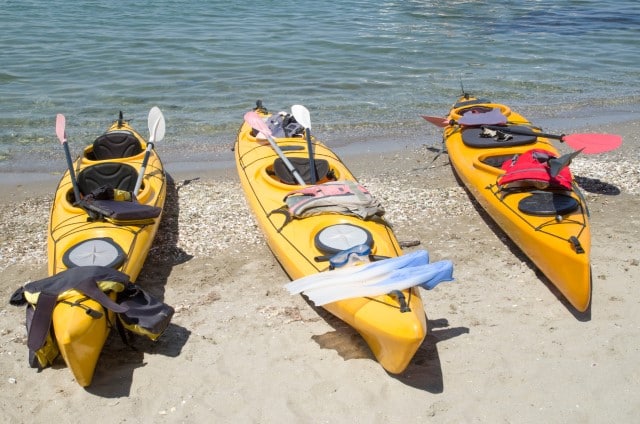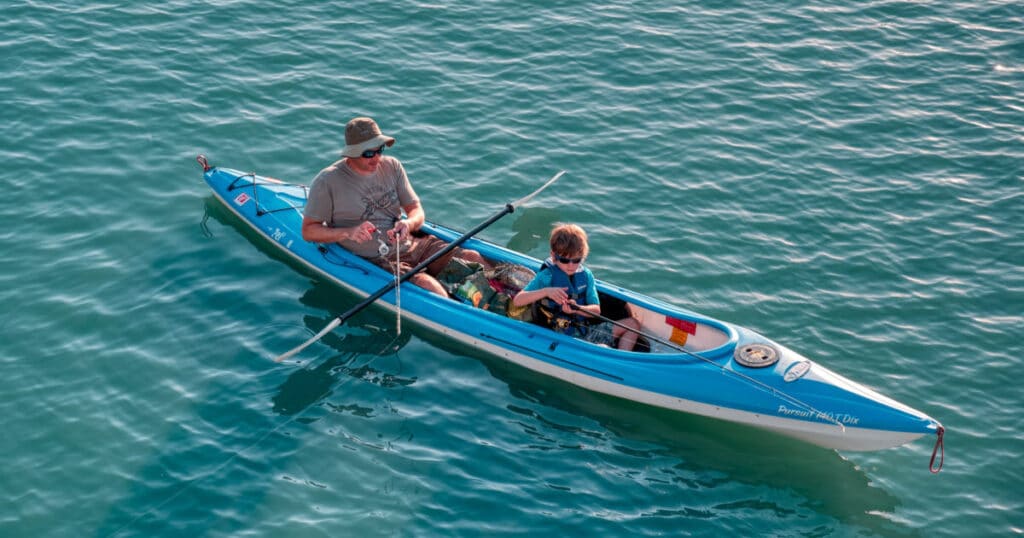Whether you see it as a sport, are trying to burn calories in a kayak, or just a way to enjoy the great outdoors, kayaking is a fun way to get exercise. Kayaking also provides a means of transportation and a way of enjoying other fun activities, such as fishing and photography. But you’ve got to understand your kayak and its limits, including its weight limit. Let’s learn more about kayak weight limits here.
Your kayak’s weight limit tells you how much weight it can hold while staying afloat and moving through the water as it should. It’s dangerous to exceed your kayak’s weight limit, so make sure you know it.
What Kayak Weight Limit is and Why it Matters
A kayak’s weight limit tells you the maximum amount of weight it can hold. You have to include the weight of everyone in the kayak and all the gear and other items you’re bringing on your trip when figuring out if your kayak will hold it.
There are different types of kayaks, and all of them have variations in their weight limits. Some factors that impact weight limits include kayak length, width, and displacement.
Whether you have a sit-in vs sit-on-top kayak matters too.
Sit-In Kayaks
Sit-inside or sit-in kayaks have an enclosed cockpit that protects your legs from wind and water, keeping you warm and dry. One issue with using a sit-in kayak is if it capsizes, it’s difficult to get back into the craft.
Also, if water gets in the cockpit, you need to remove all the water before you can continue paddling.
The average weight capacity of sit-inside kayaks is 300 lbs.
Sit-on-Top Kayaks
Unlike a sit-in kayak, a sit-on-top does not have a cockpit. If you’re using a sit-on-top kayak, you will most likely get damp from waves and paddle splashes.

But the good thing about sit-on-top kayaks is that most models have scupper holes that drain water out of the boat, preventing the kayak from being flooded.
Sit-on-top kayaks have a weight capacity ranging between 350 and 400 lbs.
Recreational Kayaks
Recreational kayaks typically feature a wider hull and are generally shorter than 12 feet long. They are designed for paddling on well-protected lakes, flatwater streams, or saltwater areas with calm waters.
The weight capacity of recreational kayaks ranges from 250 to 300 lbs.
Touring Kayaks
Touring kayaks, also known as expedition kayaks, feature a slimmer and longer beam than recreational kayaks. This shape enables the watercraft to glide through the water over extended periods.
Touring kayaks have an average weight limit of 350 lbs.
Tandem Kayaks
Tandem kayaks are designed for paddlers who want to share their kayaking adventures. They are also suitable for children or less experienced kayakers who need to practice their skills.

As they’re large enough to fit more than one kayaker, they tend to weigh more than other kayak types.
Tandem kayaks typically have a weight limit of 500 to 600 lbs.
Understanding the Numbers: Kayak Weight Limit
As I already mentioned, you’ve got to include the weight of everyone in the kayak as well as all gear and items in the watercraft when figuring out how much weight you’re putting in it. There are some amazing lightweight kayaks available, but that may not be the best fit for you.

If you’re going to bring food, extra clothing, and other gear and supplies, you’ll be adding more weight to the kayak. Also, once you take your kayak to open water, it will take in a bit of water through the scupper holes.
If the total weight exceeds the weight capacity of the kayak, it will be a lot harder to paddle. Worse, the kayak won’t be capable of staying above water.
That’s why you should stay a bit under your kayak’s weight limit. Never push it to the limit.
If your kayak ends up overwhelmed by the weight, it could end up capsizing or even sinking. That’s a dangerous situation.
To remain in the safe zone, your body weight plus the weight of the stuff you carry must weigh significantly less than the kayak weight limit.

There is still an ongoing debate as to how much you should subtract from the kayak’s weight limit. But generally speaking, the minimum percentage is 25%.
As shown below, this means that a 250-pound kayak can carry up to 187.50 pounds of body weight.
| Kayak Weight Limit | 25% of Kayak Limit (Kayak Weight Limit x .25) | Total Weight the Kayak can Support (Kayak Limit – 25% of Kayak Weight Limit) |
| 250 lbs | 62.5 lbs | 187.50 lbs |
If you’re bringing extra gear and equipment and you don’t want your kayak to sink too low in the water, you may even need to lower this to 50% of capacity.
So, let’s say you weigh around 187.50 pounds and you want to bring gear and supplies. To stay dry and paddle efficiently, you need to have a kayak that has a weight capacity of at least 350 lbs.
| Kayak Weight Limit | 50% of Kayak Limit (Kayak Weight Limit x .50) | Total Weight the Kayak can Support (Kayak Limit – 50% of Kayak Weight Limit) |
| 350 lbs | 175 lbs | 175 lbs |
What Happens if a Kayak is Overloaded?
If your kayak is overloaded, it doesn’t mean it will automatically sink. But it’s extremely risky.

Exceeding the weight limit of your kayak will make it less stable. That’s because it’ll sit lower in the water.
Due to the extra weight, an overloaded kayak will suffer from poor performance. It will slow down your kayak.
Instead of gliding through the water, the bow of the kayak ends up pushing through it. You will have to exert more effort in paddling and controlling your kayak, and in no time, you will feel tired.
Can You Increase Your Kayak Weight Limit?
You can’t increase the weight capacity of a kayak, but you can make it more buoyant. This may mean that you can add a bit more weight to it and still have it stay afloat.

It’s a good idea to invest in kayak gear such as outriggers or float forms. You will also want to add airbags to the hull or floatation bags to the bow and stern.
These will keep your kayak from taking on more water and help prevent it from sinking.
Now that you are more familiar with kayak weight limits and how to deal with them, you can choose a kayak that will work best for your weight and all you want to bring on your trip.
Final Thoughts on Kayak Weight Limits
So, now you understand kayak weight limits! The most important takeaways here are:
- You must know your kayak’s weight limit
- It’s best to stay significantly beneath it
We’ve also learned about the different types of kayaks, to help you choose the right one for you.
What are you planning to do with your kayak? Decide what you need to bring for your trips and how much storage space and extra weight capacity you’ll need.
Have fun in the great outdoors!
.


